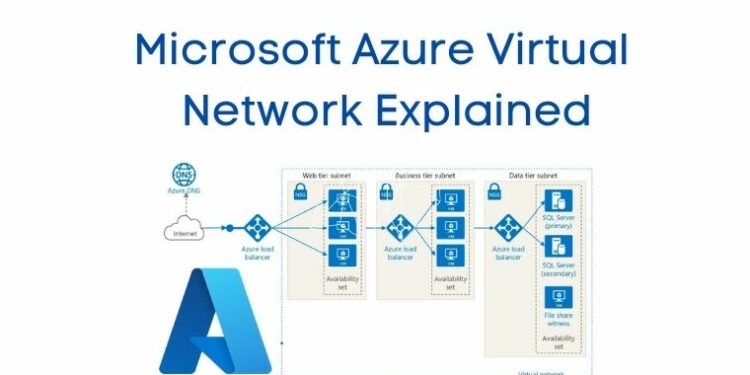How to Configure and manage virtual networks for Azure administrators
Configuring and managing virtual networks is a crucial task for Azure administrators, as virtual networks (VNETs) serve as the foundation for connecting and isolating resources within the Azure cloud environment. Here’s a guide on how to configure and manage virtual networks for Azure administrators:
- Understanding Virtual Networks: Familiarize yourself with the concept of virtual networks in Azure. Understand how VNETs enable you to create isolated network environments, segment resources, and control traffic flow.
- Navigate to Azure Portal: Log in to the Azure Portal (portal.azure.com) using your administrator credentials.
- Create a Virtual Network:
- Click on “Create a resource” > “Networking” > “Virtual network.”
- Define the basic settings, such as name, region, and address space for the VNET.
- Configure the subnet(s) within the VNET, specifying subnet names and IP address ranges.
- Peering Virtual Networks:
- Establish peering connections between different virtual networks to allow resources in those networks to communicate securely.
- Navigate to the “Peering” section of the VNET and create the peering connection.
- Network Security Groups (NSGs):
- Create NSGs to control inbound and outbound traffic to resources within the VNET.
- Associate NSGs with subnets or network interfaces to enforce security rules.
- User-Defined Routes:
- Configure user-defined routes to control how traffic is directed within the virtual network.
- Define custom routes and associate them with subnets.
- Azure Firewall or Application Gateway:
- Consider implementing Azure Firewall for network-level security or Azure Application Gateway for load balancing and application delivery.
- Virtual Network Gateway:
- Set up a Virtual Network Gateway to enable secure cross-premises connectivity (VPN) or Azure ExpressRoute (private network connection).
- Service Endpoints and Private Link:
- Utilize service endpoints to secure Azure service traffic to the VNET.
- Implement Azure Private Link to access Azure services privately through the VNET.
- Monitoring and Diagnostics:
- Monitor network traffic and performance using Azure Network Watcher.
- Use Azure Monitor to set up alerts and gain insights into network health.
- Scaling and Performance:
- Consider network performance and scalability as your workloads grow.
- Optimize network architecture and connectivity to ensure optimal performance.
- Network Connectivity and Hybrid Scenarios:
- Integrate on-premises networks with Azure using VPN gateways or Azure ExpressRoute.
- Explore hybrid scenarios, such as connecting VNETs with on-premises data centers.
- Automation and Infrastructure as Code (IaC):
- Use Azure Resource Manager templates (ARM templates) or other IaC tools to automate the deployment and configuration of virtual networks.
- Azure Policies and Compliance:
- Implement Azure Policies to enforce compliance and governance rules related to virtual networks.
- Regular Maintenance and Updates:
- Keep your virtual networks up to date, review security settings, and adjust configurations as needed.
Azure provides comprehensive documentation, tutorials, and guides for configuring and managing virtual networks. Always refer to Azure’s official resources and community forums for the most up-to-date information and best practices.














